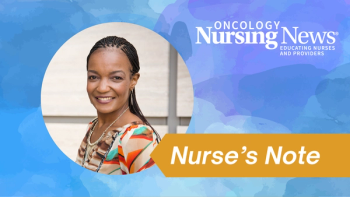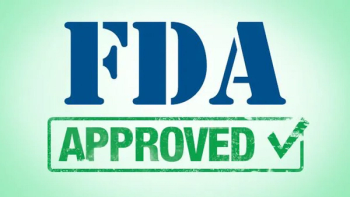
- December 2015
- Volume 9
- Issue 9
Integrated Approach Helps Patients to Manage a Poor Prognosis
One of the most difficult challenges oncology clinicians face is helping patients to manage the interplay of strong and often conflicting emotions that come with a difficult prognosis.
Vicki A. Jackson, MD, MPH
One of the most difficult challenges oncology clinicians face is helping patients to manage the interplay of strong and often conflicting emotions that come with a difficult prognosis.
Patients and their families understandably don’t want to give up hope, so when they see their oncologist, they will put on a brave face and say they want their doctor to “throw everything” at their cancer.
Yet in other moments, perhaps when only a palliative care or nurse practitioner is in the room, they may tell a different story. They will describe symptoms that are interfering with their quality of life, or mention they are worried that their families’ expectations for a cure are too high.
Advice on how clinicians can support patients in striking a balance between these two realities was the focus of a keynote presentation by Vicki A. Jackson, MD, MPH, at this fall’s 2nd Annual Palliative Care in Oncology Symposium.
Jackson, who heads the Division of Palliative Care at Massachusetts General Hospital, suggested that better integration of oncology and palliative care can help.
Such integration requires not only more robust communication among all members of the patient’s cancer care team, but also helping clinicians develop the skills needed to calibrate their discussions with patients so that they can meet them wherever they may be at the time in their desire for prognostic awareness.
“Prognostic awareness is a swinging pendulum,” Jackson explained. “Patients are really ambivalent about these discussions, and their information preferences change.”
Jackson defined prognostic awareness as, “the patient’s capacity to understand the likely dis- ease trajectory and prognosis.”
“With a deeper prognostic awareness, patients can weigh the burdens and benefits of treatment, they can have more meaningful discussions about their goals and values, and they can match their treatment decisions to those goals and values.”
How can clinicians work together to cultivate prognostic awareness? First, stressed Jackson, all members of the oncology team should develop a common understanding of what palliative care means.
“It’s not good enough to say ‘it is more than hospice.’” Rather, Jackson continued, patients need to understand that oncologists and palliative care teams are focusing together on helping them to feel as well as they can for as long as they can and to take care of their symptoms, be they from the cancer itself or its treatment.
Although joint visits where a patient sees both the oncologist and a palliative care colleague are “incredibly helpful,” such visits are not always feasible, Jackson acknowledged. Thus, another way clinicians can support each other is to document any discussions involving a prognostic disclosure on the patient’s chart, so whoever next visits the patient can pick up on how the patient responded.
“Patients integrate different information at different times from different clinicians,” stressed Jackson, and the interrelationships are complex: “The oncologist is interacting with the patient, and palliative care clinicians are having their own interaction. We need to be making sure that our communication is as tight as possible.”
A Journey, Not a Sprint
Clinicians also need to understand that a patient’s development of prognostic awareness takes time:
“Prognostic awareness is a series of understandings, and not everyone is going to be on the same page all at once.” Jackson relayed the experience of one patient who told her that she may not always want to hear prognostic information, such as a recent discouraging CT scan result.
On the other hand, letting in a little at a time can relieve the pressure: “There are times when it won’t be overwhelming, and it is therapeutic to think about the hard things ... opening the box to let a little of this information in, and then closing it again.”
Jackson said that gradually discussing with patients the possibility of dying can help cultivate prognostic awareness. Over time, patients will gain practice with thinking about their prognosis, and it will help them to desensitize their fears of talking about prognosis and the trajectory of their illness. Through such a process, patients can build skills in managing the strong emotions that accompany thoughts of their prognosis and begin to reconcile their hopes for the future with the likely reality of their illness.
A Delicate Balance
“I am not implying that in initiating these discussions that we know better than our patients,” Jackson emphasized. However, oncology professionals will have seen hundreds, even thou- sands, of patients with a difficult diagnosis: “We have a sense of what happens ... and we need to help patients through this developmental process, so they can integrate and understand what the likelihood of the trajectory is.”
Armed with that understanding—and given enough time to process it—patients are more likely to make further treatment decisions that make sense for them, their families, and quality of life. This means not only helping patients to manage symptoms, but also helping them to develop “adaptive coping strategies,” said Jackson.
“Maybe it’s setting that goal to go to Europe over winter break. What has to happen for that to be an enjoyable family experience? Or, how do we help you live well, so you can tolerate these rounds of chemotherapy and still be a mom or dad and pick up your kids from school?”
“We help patients tolerate, over time, the possibility of dying, and plan for and imagine the future,” remaining ever sensitive to the patient’s information needs at that particular moment.
It’s all “very, very tricky,” said Jackson: “The patients are doing their best, and we are doing our best ... It’s not a ‘one-and-done’ conversation. For the vast majority of patients, it’s a process.”
Articles in this issue
almost 10 years ago
Create a Personal Learning Network With Twitteralmost 10 years ago
Switching Places: From Nurse to Caregiveralmost 10 years ago
The Moving Parts of a Villagealmost 10 years ago
For Patients With Lung Cancer, New Therapies Offer Reason to Hopeabout 10 years ago
Revisiting Surgical Interventions for Pancoast Tumor Related Painabout 10 years ago
Improving Outcomes in Lung Cancer With Multidisciplinary Careabout 10 years ago
Compression Devices Improve Life With Lymphedema in More Ways Than Oneabout 10 years ago
Celebrating a Season of Hope and Progressabout 10 years ago
Breast Cancer Recurrence ... Many Years LaterNewsletter
Knowledge is power. Don’t miss the most recent breakthroughs in cancer care.
















































































